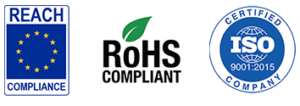Thermally conductive adhesives (TCAs) are specialty bonding materials that both mechanically secure components and provide a heat‐flow path between heat‐generating devices (e.g. power semiconductors, LEDs, batteries) and heat‐dissipating structures (e.g. heat sinks, chassis). They’re widely used in electronics, EV battery packs, LED modules, and aerospace systems to prevent overheating, improve reliability, and even replace mechanical fasteners.
1. Key Functions & Formats
-
Primary roles
-
Thermal management: fill micro-gaps and conduct heat away from hot spots
-
Structural bonding: replace screws or clips where weight/space constraints apply
-
Optional electrical behavior: insulating or conductive, depending on fillers
-
-
Formats
-
Liquid epoxies/urethanes/acrylics (1- or 2-part systems)
-
Silicone adhesives (flexible, wide temperature range)
-
Pre-formed tapes & films (controlled bond line, pressure-sensitive)
-
Gap pads & greases (non-adhesive alternatives when re-workability is critical)
-
2. Chemistry & Fillers
| Chemistry | Typical Fillers | Thermal Conductivity (W/m·K) | Electrical Behavior |
|---|---|---|---|
| Epoxy | Silver, aluminum, ceramics, Alumina, Boron Nitride | 1–8 | Silver is highly conductive. Al can be conductive. |
| Silicone | Alumina, boron nitride, zinc oxide | 0.5–4 | Electrically insulative |
| Polyurethane | Alumina, AlN, SiC | 0.4–3 | Insulating |
-
Fillers: metal (Ag, Al), ceramic (Al₂O₃, BN, SiC) or hybrid blends.
-
Trade-offs: higher filler loading boosts conductivity but raises viscosity and can reduce bond strength and cure speed.
3. Performance Metrics
When comparing TCAs, key spec‐sheet parameters include:
| Property | Why It Matters |
|---|---|
| Thermal conductivity | Higher → lower thermal resistance |
| Viscosity / thixotropy | Controls ease of dispensing and gap-filling |
| Dielectric strength | Ensures electrical insulation (if required) |
| Volume resistivity | Indicates whether the adhesive is electrically conductive or insulative |
| Lap‐shear tensile strength | Mechanical integrity under thermal cycling |
| Operating temperature | Must match application extremes (e.g. –40 °C to +200 °C) |
| Flame rating (UL 94) | Safety in consumer or automotive applications |
4. Application Examples
-
Heat‐sink bonding: permanent epoxy to attach power modules to extruded aluminum sinks.
-
LED mounting: silicone adhesives provide flexibility and matching CTE to ceramic LEDs.
-
Battery pack: gap‐filling tapes or pours to thermally link cells to a cooling plate.
-
Sensor potting: TCAs encapsulate and thermally couple temperature or pressure sensors.
5. Selection Tips
-
Define thermal budget: calculate required junction-to-ambient resistance.
-
Assess rework needs: use greases or pads if you may need to replace parts.
-
Balance conductivity vs. processability: too viscous and you’ll trap voids; too thin and you may slump.
-
Check electrical requirements: choose electrically insulative fillers (e.g. ceramic) for high-voltage circuits.
-
Verify reliability: look for datasheet thermal cycling, humidity resistance, and adhesion tests.


